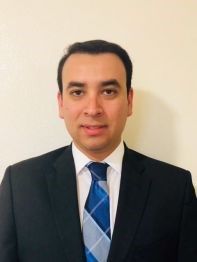Specialized Care Critical for Brain Injury Recovery
According to the Brain Injury Association of America, nearly 2.6 million Americans suffer from a brain injury each year (Brain Injury Association of America, 2022). Fortunately, most people survive and live long and healthy lives. However, a critical part of their recovery may include treatment and therapy because some brain injuries may affect a person’s cognitive and functional abilities. PAM Health physicians Dr. Kirill Alekseyev and Dr. Francisco Sesatty, board-certified in both brain injury and physical medicine and rehabilitation, are experts in helping patients achieve their fullest potential. They understand how PAM Health’s network of long-term acute care and inpatient rehabilitation hospitals are uniquely positioned to treat patients recovering from all varieties of brain injuries. One major reason is that we understand that each person and each brain injury is unique.
Find a PAM Health Location for Personalized Care
“The brain is actually very fragile and we need to be more careful when we take risks,” explains Dr. Alekseyev. “Any injury to the brain can have lifelong impact on speech, function, emotion, personality, etc. Having a brain injury expert in your corner can get the patient through some of the injuries and return them to independence …. The brain is so complex that studies are evolving every day and we need to keep learning new methods of treatment.”
Acquired brain injuries fall into two primary categories: non-traumatic (nTBI) and traumatic (TBI). Both can be life threatening and should be regarded as the serious issues they are.
Explore Brain Injury Rehabilitation Offered by PAM Health
Non-Traumatic Brain Injury (nTBI)
The Brain Injury Association defines a non-traumatic brain injury as damage that occurs to the brain due to “internal factors, such as lack of oxygen, exposure to toxins or pressure from a tumor. (Brain Injury Association of America, 2022)” Although termed a non-traumatic brain injury, an nTBI can still be an incredibly serious medical condition. The reason why it is termed “non-traumatic” is that the damage to the brain occurs by a series of reactions happening inside the body.
Do not let the term non-traumatic fool you. As Dr. Alekseyev cautions: “Never judge the book by its cover, you must take every brain injury seriously whether it is traumatic or non-traumatic. Non-traumatic brain injuries are just as serious and are dependent on the cause. If non-traumatic brain injuries are secondary to Brain Cancer or Hepatic Encephalopathy, these conditions can be very dangerous and life-threatening with poor prognosis at times.”
Common causes of nTBIs include:
- Stroke (ischemic, hemorrhagic)
- Ischemic – blood flow to the brain is cut off
- Hemorrhagic – something causes blood to pool in the brain
- Exposure to Toxins
- Hypoxia/anoxia
- Drug overdose
- Brain tumor
Of the various types of nTBIs, strokes are the most common, effecting someone in the United States every 40 seconds, or about 795,000 per year (Centers for Disease Control and Prevention, 2022).
Traumatic Brain Injury (TBI)
TBIs are a major cause of death and disability in the United States, causing about 176 deaths and 611 hospitalizations per day (Centers for Disease Control and Prevention, 2022). Traumatic brain injuries occur when an external force impacts the brain and causes damage when the head hits an object or an object pierces the skull and enters the brain (National Insitutes of Health, 2022).
Common causes of TBI include:
- Motor vehicle accident
- Sports injury
- Fall
- Gunshot
- Stabbing
- Skull fracture
When to Seek Care - Immediately
While some types of brain injuries are obvious, such as a cut or wound, others may be more subtle. For instance, with some mild concussions the individual may not even be aware they suffered an injury. About 50% of concussions actually go undiagnosed. Regardless of the type, it is better to err on the side of caution when dealing with the brain.
“If you suspect a brain injury has occurred, do not wait and immediately go see a brain injury specialist. That decision may just save your life,” warns Dr. Alekseyev. “It is extremely important to seek out brain injury experts because many times a patient sees a physician who is not an expert in their field and things can be missed. By seeing a brain injury expert, you are giving yourself the best option for proper diagnosis and treatment. Timely imaging, diagnosis and treatment is crucial for patient’s wellbeing and we are experts for a reason because we are able to help in a timely manner without waiting for symptoms to get worse.”
Recovery is Possible
Recovery from a brain injury can vary as widely as the causes. Many patients return to pre-injury status, while others may have lingering issues. Much also depends on any co-existing diagnoses or injuries that may have caused the brain injury or happened at the same time. For instance, if an individual has a brain bleed as the result of a car accident, but also suffers damage to their limbs, the care and rehabilitation plan is more complex. Regardless, rehabilitation with a brain injury expert has the potential to optimize recovery prospects.
"Rehab plays a crucial role in brain injury recovery,” Dr. Sesatty explains. “Brain injury specialists can create a customized care plan focused on the patient’s needs, rehab potential and goals. This plan helps patients and families know what to expect during the rehabilitation process and provides the initial roadmap to brain injury recovery. The appropriate patient care setting (inpatient vs outpatient rehabilitation) is dependent on several factors and a brain injury physician is best qualified to make the appropriate recommendation for patients. In severe brain injuries, rehabilitation most likely will start in the inpatient rehabilitation setting, and will involve a multidisciplinary team to include nursing, physical therapy, occupational therapy, speech therapy, dietician, rehab counselor, and sometimes neuropsychology. Patients who are safe to discharge home can be transition to an outpatient rehabilitation program and continue their brain injury recovery in the home setting to reach their functional potential."
Explore PAM Health's Rehab Hospital in Dover, Delaware
Explore PAM Health's Rehabilitation Services in San Antonio, TX
As research continues, promising advances in brain injury treatment and recovery have been positive and thus so has the outlook for patients recovering from a brain injury. Much research is done with the concept of “neuroplasticity” which means the brain can essentially “reprogram” itself and develop new pathways to bypass the ones that have been injured (Bennett, 2022). As Dr. Alekseyev optimistically shares, “We have patients who constantly defied the odds and recovered.”
References
Bennett, H. (2022, January 17). Neuroplasticity: A neurologist explains how the brain recovers from injury. Retrieved from BBC Science Focus Magazine: https://www.sciencefocus.com/the-human-body/can-brain-heal-itself/
Brain Injury Association of America. (2022). Understanding Brain Injury. Retrieved from Brain Injury Association of America: https://www.biausa.org/brain-injury/about-brain-injury/basics/under-standing-the-injury
Centers for Disease Control and Prevention. (2022, October 14). Stroke Facts. Retrieved from Centers for Disease Control and Preention: https://www.cdc.gov/stroke/facts.htm
Centers for Disease Control and Prevention. (2022, November 14). Traumatic Brain Injury and Concussion. Retrieved from Centers for Disease Control and Prevention: https://www.cdc.gov/traumaticbraininjury/index.html
National Insitutes of Health. (2022, July 25). Traumatic Brain Injury. Retrieved from National Institute of Neurological Disorders and Stroke: https://www.ninds.nih.gov/health-information/disorders/traumatic-brain-injury
Featured Physicians

Dr. Kirill Alekseyev of PAM Health Rehabilitation Hospital of Dover

Dr. Francisco Sesatty of PAM Health Warm Springs Rehabilitation Hospital of Northeast San Antonio